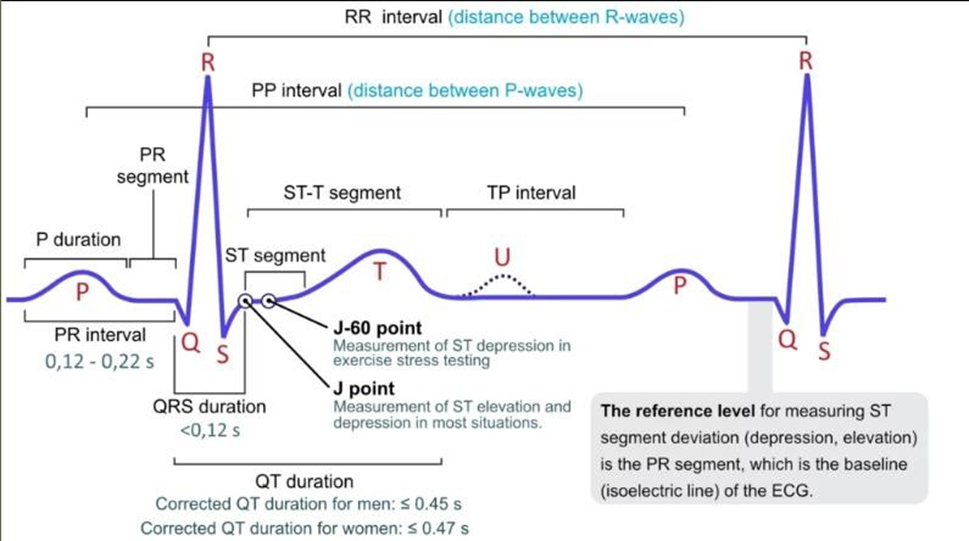A nurse is reviewing the EKG strip of a client who has End Stage Renal Disease (ESRD) and has missed hemodialysis. Which of the following abnormalities on the client's EKG should the nurse interpret as a sign of hyperkalemia?
Prolonged P-R interval
Peaked T waves
Elevated ST segment
Inverted P wave
The Correct Answer is B
A. Prolonged P-R interval: A prolonged P-R interval may indicate an atrioventricular (AV) block or conduction delay, but it is not specifically associated with hyperkalemia.
B. Peaked T waves: Peaked T waves are a classic EKG finding in hyperkalemia. Hyperkalemia can affect cardiac repolarization, leading to tall, peaked T waves on the EKG.
C. Elevated ST segment: An elevated ST segment may indicate myocardial injury or ischemia but is not typically associated with hyperkalemia.
D. Inverted P wave: An inverted P wave may indicate atrial enlargement or conduction abnormalities but is not specifically associated with hyperkalemia.
Nursing Test Bank
Naxlex Comprehensive Predictor Exams
Related Questions
Correct Answer is ["B","C","D","E"]
Explanation
A. Sterilize dishes before using: This is not typically necessary. Washing dishes with hot water and soap or using a dishwasher is sufficient to ensure they are clean.
B. Maintain good hygiene: Good hygiene practices are crucial for immunocompromised individuals to prevent infections.
C. Cook meats and fish well: Properly cooking meats and fish helps to kill any harmful bacteria and parasites that could cause infections.
D. Avoid consuming raw foods: Raw foods, especially meats, eggs, and some vegetables, can harbor harmful bacteria and parasites, posing a risk of infection.
E. Wash hands frequently: Frequent handwashing is one of the most effective ways to prevent the spread of infections.
Correct Answer is "{\"xRanges\":[104.2578125,134.2578125],\"yRanges\":[114.30078125,144.30078125]}"
Explanation

Whether you are a student looking to ace your exams or a practicing nurse seeking to enhance your expertise , our nursing education contents will empower you with the confidence and competence to make a difference in the lives of patients and become a respected leader in the healthcare field.
Visit Naxlex, invest in your future and unlock endless possibilities with our unparalleled nursing education contents today
Report Wrong Answer on the Current Question
Do you disagree with the answer? If yes, what is your expected answer? Explain.
Kindly be descriptive with the issue you are facing.
